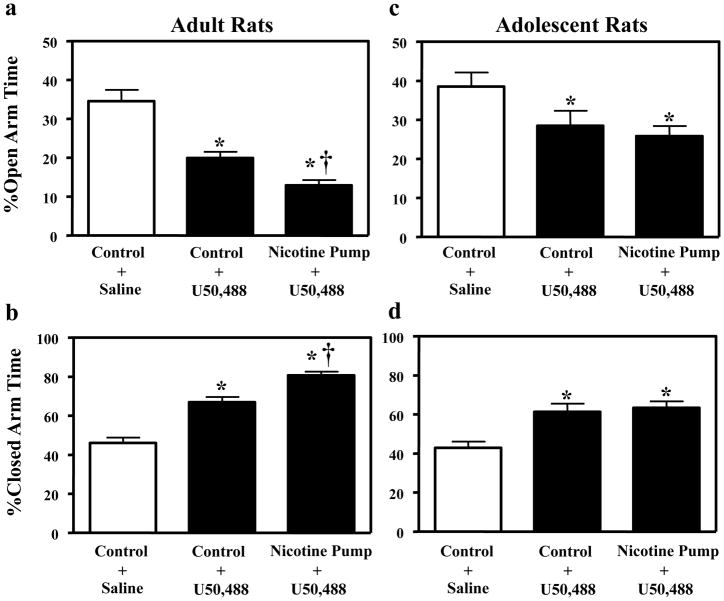Fig. 2.
Data reflect % open and closed arm time (± SEM). Separate groups of adults received saline (n=16) or U50,488 in control (n=14) or nicotine-treated groups (n=16). Adolescents also received saline (n=9) or U50,488 in control (n=9) or nicotine-treated groups (n=10). In adults (Fig. 2a and b), U50,488 (5 mg/kg) decreased time spent on the open arms and increased time spent in the closed arms in both control and nicotine-treated adults relative to rats that received saline (*p ≤ 0.05). This effect was exacerbated in nicotine-treated adults relative to control adults that received U50,488 alone (†p ≤ 0.05). In adolescents (Fig. 2c and d), U50,488 (5 mg/kg) also decreased time spent on the open arms and increased time spent on the closed arms in control and nicotine-treated adolescents relative to saline controls (*p ≤ 0.05). However, this effect was not exacerbated in nicotine-treated adolescents.

